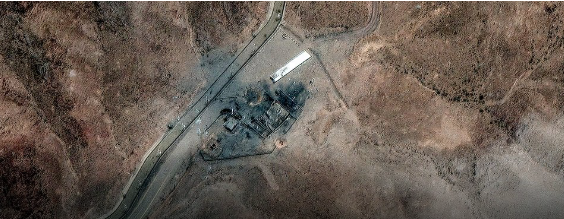
LIVE UPDATES: Donald Trump warned the warring sides to ‘please not violate’ the ceasefire last night, declaring that it marked a new chapter of ‘world peace’.
| Published June 24, 2025
In the aftermath of coordinated U.S.-led strikes on Iranian nuclear facilities, Tehran has broken its silence—revealing that while key sites were hit, the country’s nuclear program remains largely intact. This disclosure challenges earlier claims of a decisive military victory and raises serious questions about the effectiveness of such strikes in halting Iran’s nuclear ambitions. With enriched uranium and critical infrastructure reportedly preserved or relocated before the attack, Iran’s statement signals both strategic foresight and a defiant message to the West. The implications are far-reaching, from regional stability to global non-proliferation efforts.
🇮🇷 What Iran Has Disclosed About Its Nuclear Programme Post-Strikes
1. Nuclear Sites Were Hit, but Stockpiles Moved
Iran admits that key nuclear enrichment facilities—Fordow, Natanz, and Isfahan—were targeted in the U.S.-led strikes known as Operation Midnight Hammer. However, government officials also claim that significant enriched uranium and equipment had already been relocated or buried before the attacks, minimizing damage to vital components.
2. Minimal Delay, Not Destruction
Although international leaders, including former President Trump, described the bombs as devastating the nuclear programme, intelligence analyses indicate these strikes only delayed progress by a few months—not eliminated it entirely. Iran reportedly still possesses enriched uranium sufficient for further enrichment.
3. Underground and Covert Resilience
Despite surface-level hits, much of Iran’s nuclear infrastructural knowledge, underground facilities, and scientific know-how remain intact. Satellite imagery showed Iran preserving centrifuges and essential infrastructure before the strikes. Analysts caution that these capabilities could be quickly revived.
4. IAEA Cooperation in Question
Following the attacks, Iran’s parliament is pushing to suspend or halt cooperation with the International Atomic Energy Agency (IAEA), hampering independent assessments of any long-term damage. This raises fears that monitoring may become more limited.
5. Strategic and Diplomatic Fallout
While Iran claims strategic resilience, the strikes have triggered broader diplomatic and policy fallout. Tehran is threatening to exit the Nuclear Non‑Proliferation Treaty if international pressure continues. Meanwhile, a fragile Israel‑Iran ceasefire brokered by Trump and Qatar remains in effect, maintaining delicate regional stability.
 Implications
Implications
1. Temporary Setback, Not Elimination
Iran’s admission that its nuclear assets were hit—but not destroyed—suggests the strikes may have delayed, but not dismantled, its nuclear ambitions. This creates a short-term window for diplomacy or further military actions before the program resumes.
2. Escalating Regional Tensions
The revelation confirms that critical infrastructure remains intact, stoking fears in Israel and Gulf nations. This could justify preemptive or follow-up strikes, increasing the risk of a broader Middle East conflict.
3. IAEA Monitoring at Risk
Iran’s threat to reduce or suspend cooperation with the IAEA undermines global nuclear transparency and limits independent verification. This could lead to unchecked enrichment and speculation over potential weaponization.
4. Undermining of U.S. Deterrence Claims
Former President Trump claimed a decisive victory with the operation, but Iran’s statements—and Western intelligence—suggest only moderate damage. This weakens the narrative of military effectiveness as a long-term deterrent.
5. Diplomatic Pressure May Shift
The partial resilience of Iran’s program may embolden hardliners in Tehran while pressuring global powers (especially in the EU and China) to re-engage diplomatically—possibly pushing for a new version of the nuclear deal.
6. Strategic Use of Deception by Iran
Iran’s ability to conceal or relocate assets prior to the strikes raises concerns about its ongoing use of deception and underground facilities. This could prompt nations to reassess their intelligence capabilities and pre-emptive strategies.
💬 Overall Takeaway:
Iran’s revelation that its nuclear program largely survived the recent strikes challenges the narrative of a decisive military blow. While the attacks disrupted operations, they failed to neutralize Iran’s long-term nuclear capability. This reinforces the resilience—and strategic depth—of Iran’s nuclear infrastructure, much of which appears to have been shielded or relocated in advance. The episode underscores the limits of airstrikes alone in halting nuclear development and highlights the urgent need for renewed international oversight, intelligence coordination, and diplomatic engagement to prevent further escalation and proliferation in the region.





Be the first to comment